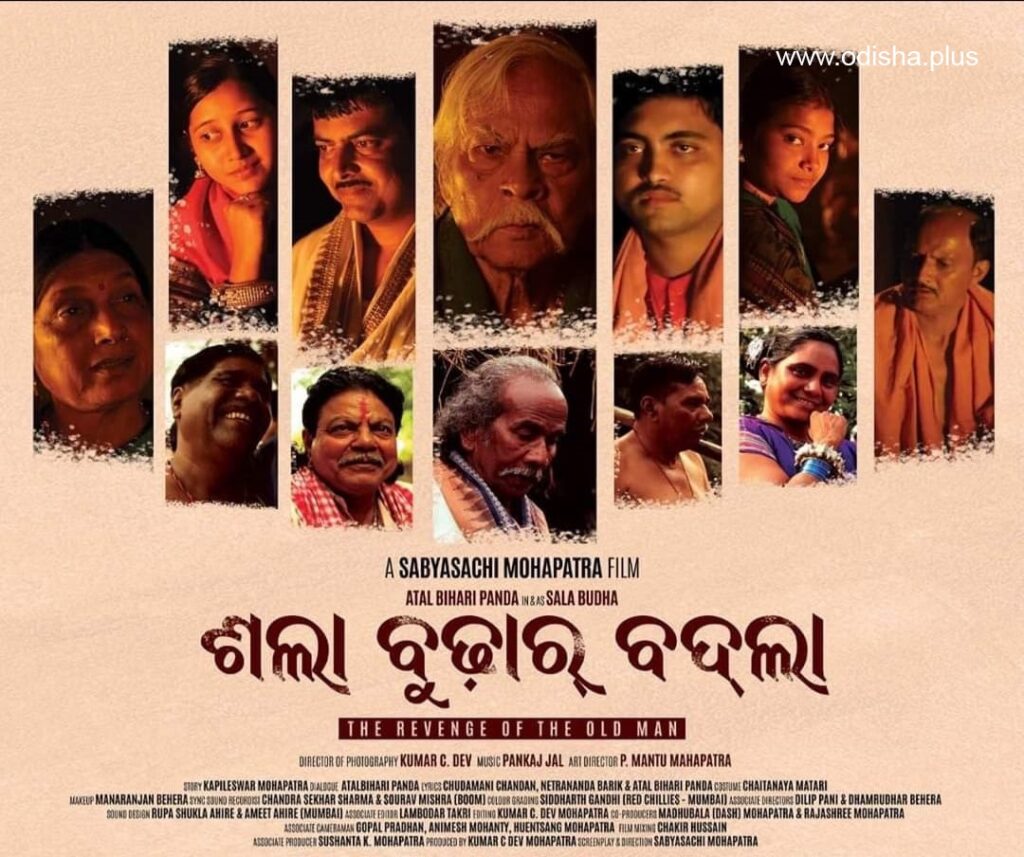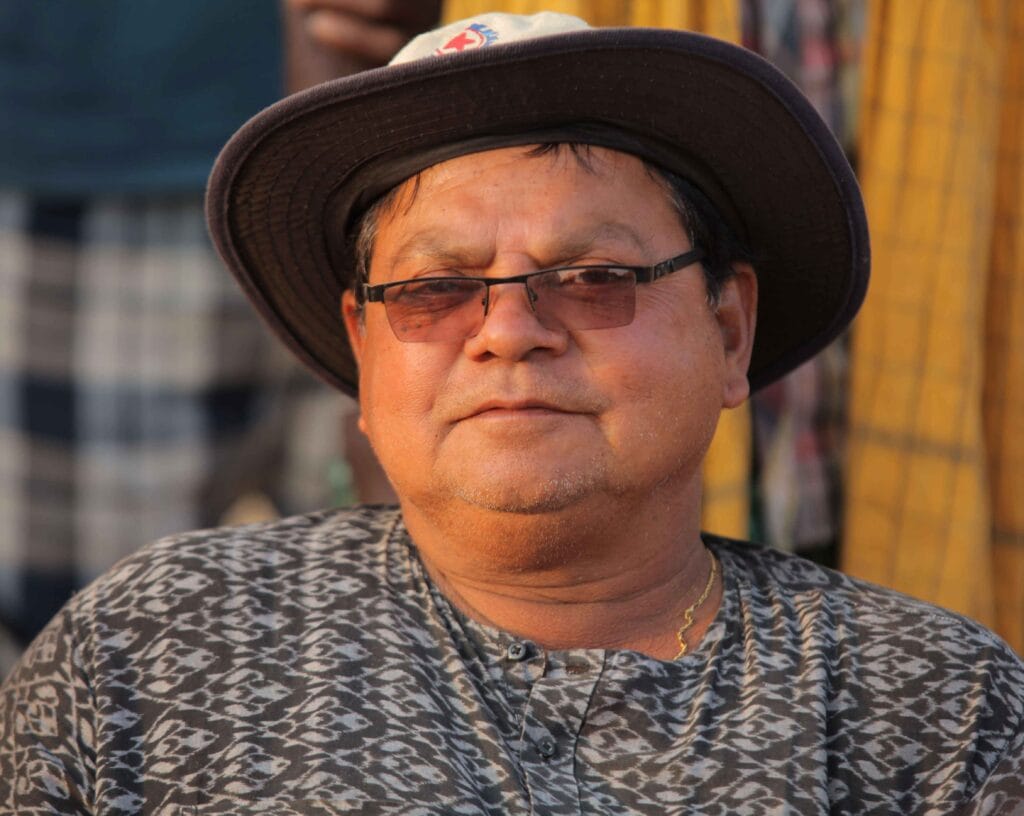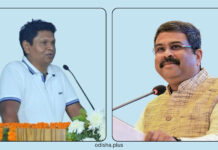Odisha Plus Bureau
Sabyasachi Mohapatra is a National Film Award-winning director in the Odia film industry. He has won laurels for and popularized Odia culture among global audiences. Nikhil caught up with him for a candid conversation talking about the woes of the Odia film industry and what young filmmakers need to imbibe to carry forward the tradition of ‘art cinema.’

Mainstream Odia cinema, it seems, emphasises slapstick comedy and melodramatic tropes for popularity, what is your view on this?
The target audience of mainstream commercial cinema is everyone. From the first benchers to the last. They have to satisfy all kinds of audiences. So, they have to make slapstick comedy, sometimes action films and sometimes emotional dramas too. Non-commercial art films can co-exist with mainstream films. There is a market for that kind of film also. The two need not be in competition with each other.
In your long career as a director, the use of sounds and visuals has been very extensive. Is there a unique method you have developed?
I have been in the industry for 45 years. I started my career as an assistant director, then associate director and then I made my first film in 1986 – Sabu Mayare Baya. So, I have learned. I was a student altogether and even now I claim that I am a student of cinema. So, I have adopted a pattern of using sounds and visuals but it differs from film to film. To my good luck, my son also works as a director of photography and he has gotten a lot of exposure in Hindi cinema and even Hollywood cinema. So, when he joined hands with me, I used to learn from him also. His concept of visuals and my concept sometimes clash but our goal remains the same. So, I discuss visuals and audio with him to stay up to date with the needs of the present times. Like that, I do my films. So, it differs from film to film. It even differs from sequence to sequence and also subject to subject. You can’t always remain fixated on a particular idea. No, it must change with the changing times, changing subjects and changing emotions.
Many of your films revolve around tribal characters and their culture, why is that?
We are all corrupted nowadays. They are still preserving the real values of the Indian culture. They are nice people, innocent people. They have got different types of cultures. I really appreciate that even in this day and age they like to live closely-knit group lives. Whatever they do, say, for example, a hunt; they do it for the entire village. That kind of lifestyle we are missing and we have to learn human values from them. Of course, I have made films on other subjects also. I have experimented with different genres of filmmaking. However, because my father used to stay in tribal areas and he was a great writer – he wrote the story Sala Budha – I have been making films based on his stories because I am very fascinated by the tribal culture.
About melodrama, it is used in commercial films and art films also. It is also found in your films but how is it different from commercial films?
Melodrama is a way of life. We all live such lives but it’s more about how it is presented. I mostly try to present such strong emotions in the most natural way that is possible. That is why I don’t make my characters act, I demand from them that emotions should come in a flow from within them. Many aspects of our lives in their truest sense are melodramatic. However, when we are presenting it on screen it should look natural not fabricated. That is why handling the artists is also a director’s secret [laughs]. Also, how well you can develop the situation is important. Especially there are two kinds of films. One type is the slow one, the other type that I make is for the audience. The audience must enjoy watching my films. Let them see a good cinema and at the same time let them enjoy it. I always maintain the rhythm and the pace of the film.
During the new wave of cinema, the Odia film industry was also flourishing. Many art films with good subjects were being made, what happened after that?
There were good films being made even after the new wave had passed but the main thing that young filmmakers and all of us must understand is that to make any film – good or bad – you need patronage. Who gives this patronage? The government. Even Marathi cinema was also making cliché remakes but then the government supported their endeavours in making art films. The industry there received subsidies. What happens when you get this kind of support is that filmmakers become confident. Confident, that their experimental cinema can also be viable. This is where we lag. The Odia film development corporation that was functioning back in our days is now completely defunct. Patronage is nil. Films are a commercial undertaking also, this must not be forgotten. Somebody needs to invest money. Another thing because of which even the mainstream cinema is suffering is where is the market? The market is for Hindi and South Indian cinema. At the same time, filmmakers started making plagiarised films. How long will the public consume such things? This hurt the industry badly. But I am optimistic that a change for good will come, it is brewing.

It has often been said that your films are not for mass consumption but only for film festival circles, what do you think about that?
My first good film – Bhukha, which was released in 1989 – did very well in Western Odisha. It did well in the coastal belt – Bhubaneshwar, Cuttack and Puri – also. It was some years later, in the middle of my career that I did not have the courage to release my films. There is a lot that goes into making and then distributing a film. From posters, and banners to all kinds of promotional events, a whole other level of budgeting is required. You can never know, ultimately, how many people will see it because it is an art cinema, not out-and-out commercial cinema. But recently, because my son was the producer and editor, he insisted that we release our film in spite of all the challenges and we did. You won’t believe, even in heavy rains during the time, how many people actually watched it. It did wonderful business.
There is a divide between art cinema and commercial cinema. Do you believe that this divide and the debate surrounding it is hampering the growth of Odia cinema or hurting it in some way?
Not at all. There will always be two kinds of cinema. The one is commercial cinema and the art cinema. Both will always co-exist. Commercial films also need to exist. Otherwise, how will the industry survive? There are so many technicians, junior artists and other crew members who depend on that kind of film for their livelihoods. Then there is another stream of cinema – the art cinema. It will cater to audiences parallelly. Earlier, the difference was that this art cinema also used to do good business unlike now.
What is the one essential thing that you would say young aspirant filmmakers need to learn?
First of all, I will say they must be very sincere in their work. They must invest time. For everything, every branch of filmmaking and at the same time, they must be very aware of their culture because they have grown from that culture. They need only portray it authentically on the screen to do wonders because people will identify with it. The one important Mantra is to be confident. Be sincere, that is the most important thing.
Which films and filmmakers have influenced you and your works?
Many great filmmakers have influenced me at different stages of my career. For I have grown from the industry. Sometimes it was Vittorio De Sica, sometimes Bergman, sometimes Satyajit Ray, sometimes Bimal Roy and V Shantaram. They were my inspirations mostly. I have mostly followed their treatment of the scene and the emotions that they wanted to convey. Most importantly I have tried to incorporate their treatment of characters.
(This Interview conducted by Nikhil, a student of PGDJ English at IIMC, Dhenkanal.)
Tags: #SabyasachiMohapatra #artcinema #OdishaFilms #Odisha #SalaBudha #NationalFilmAward #OdiaDirectorInterview





















